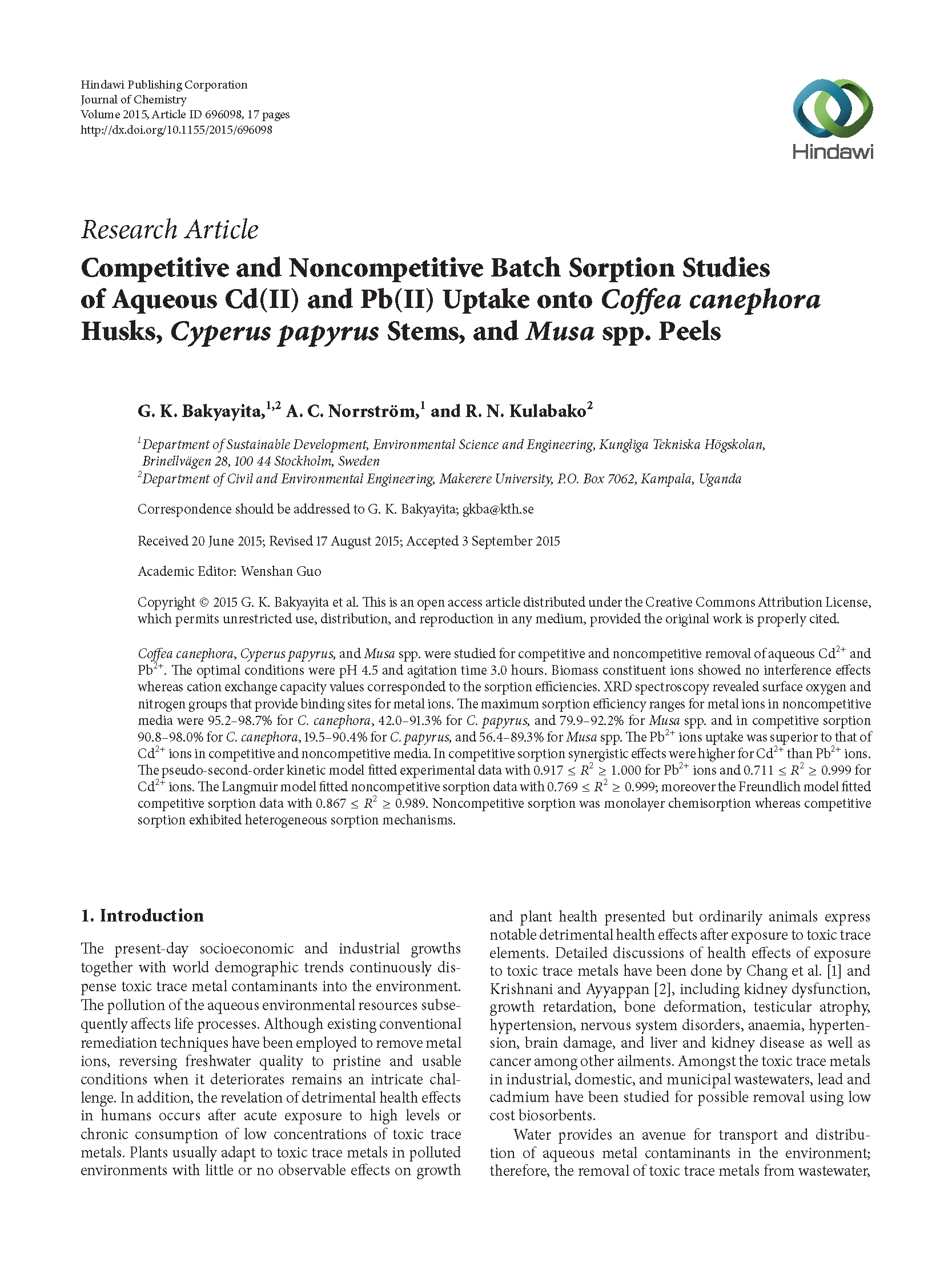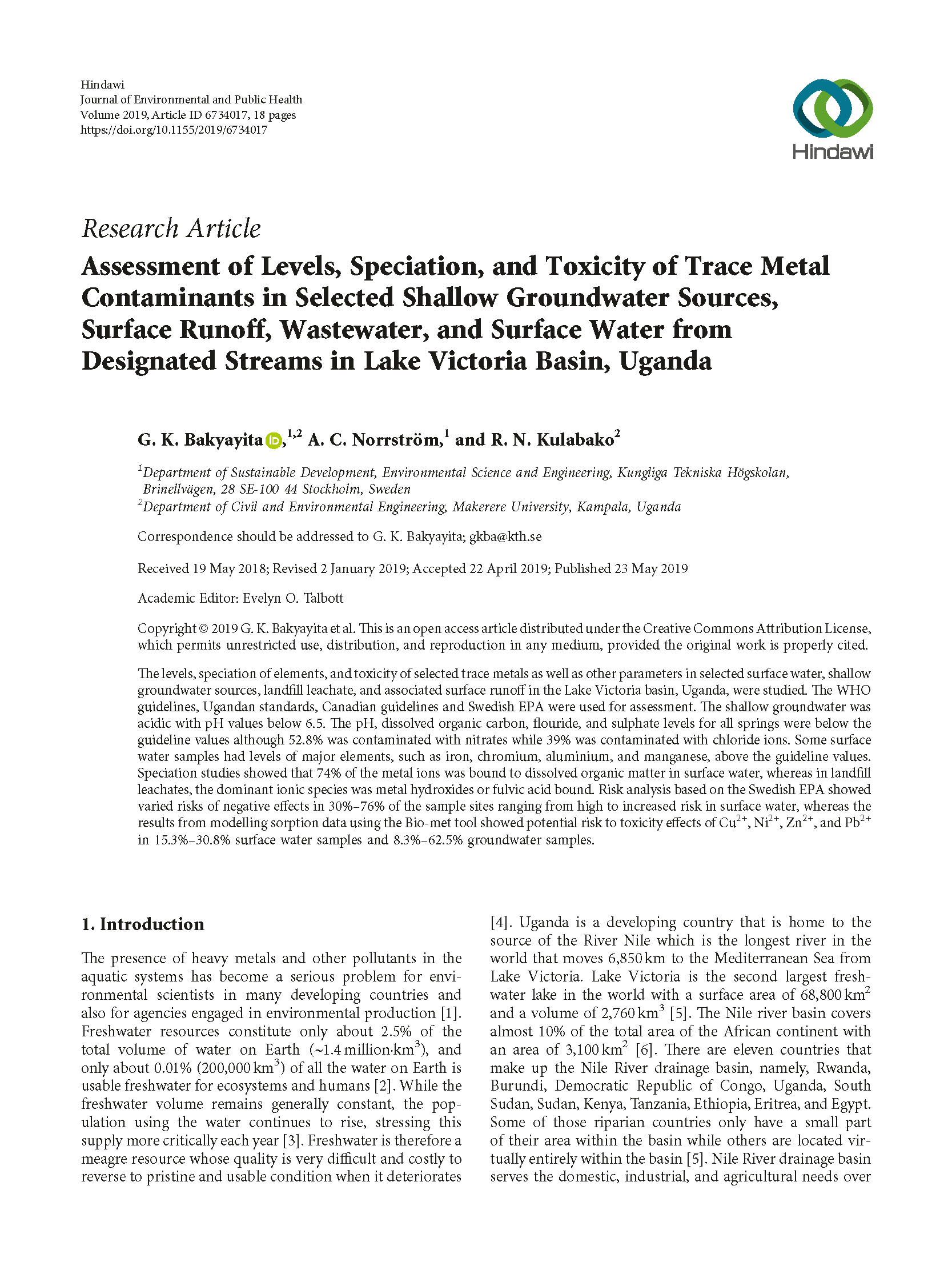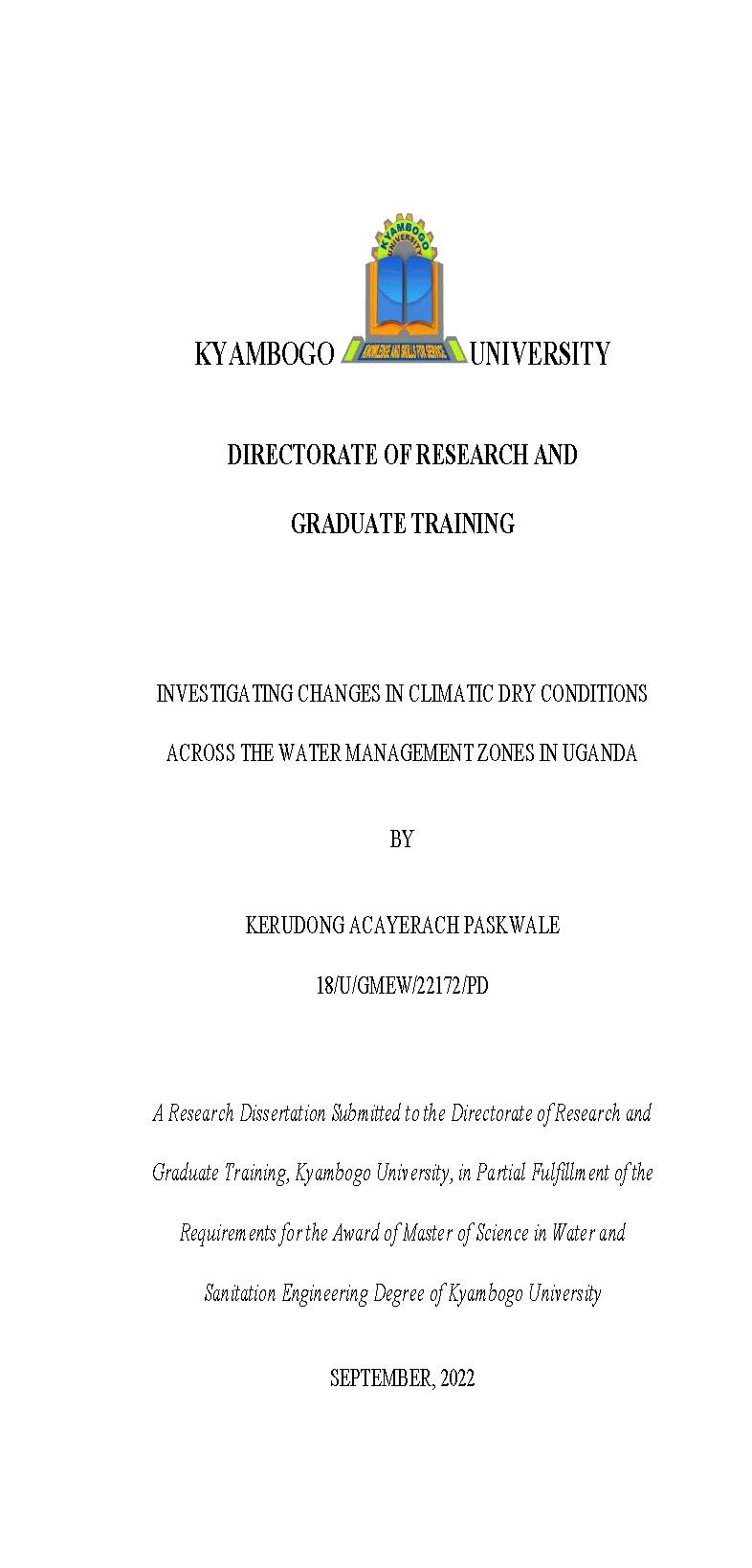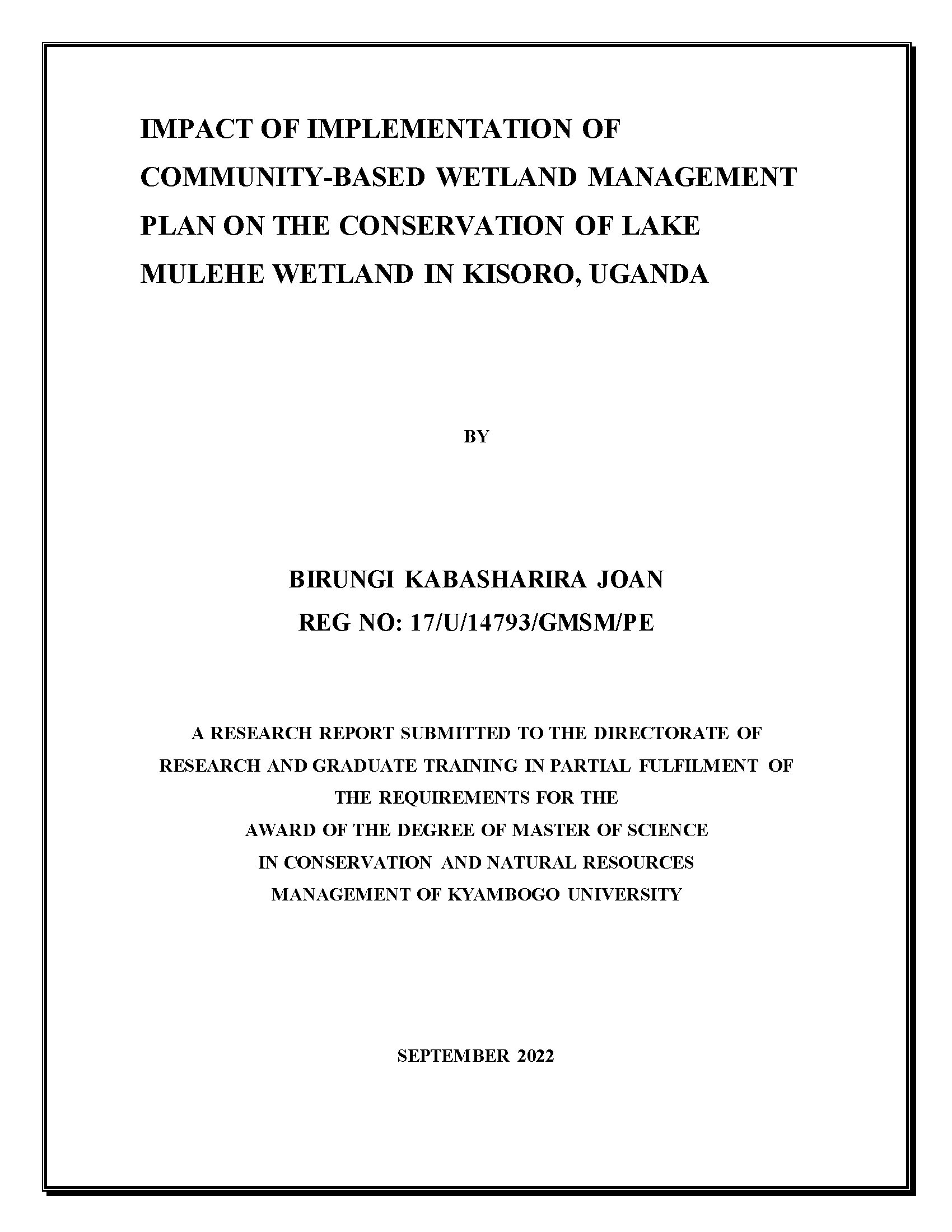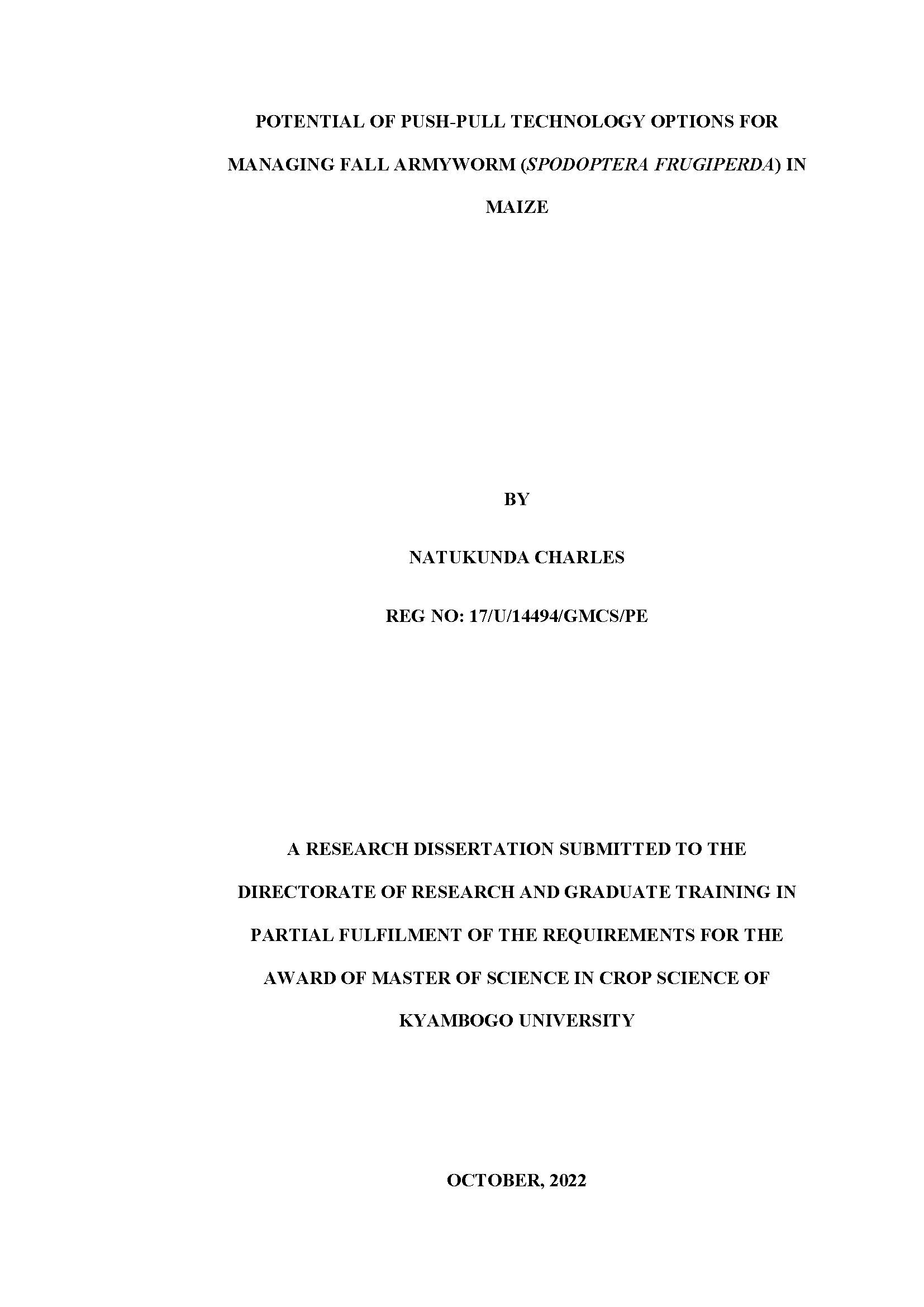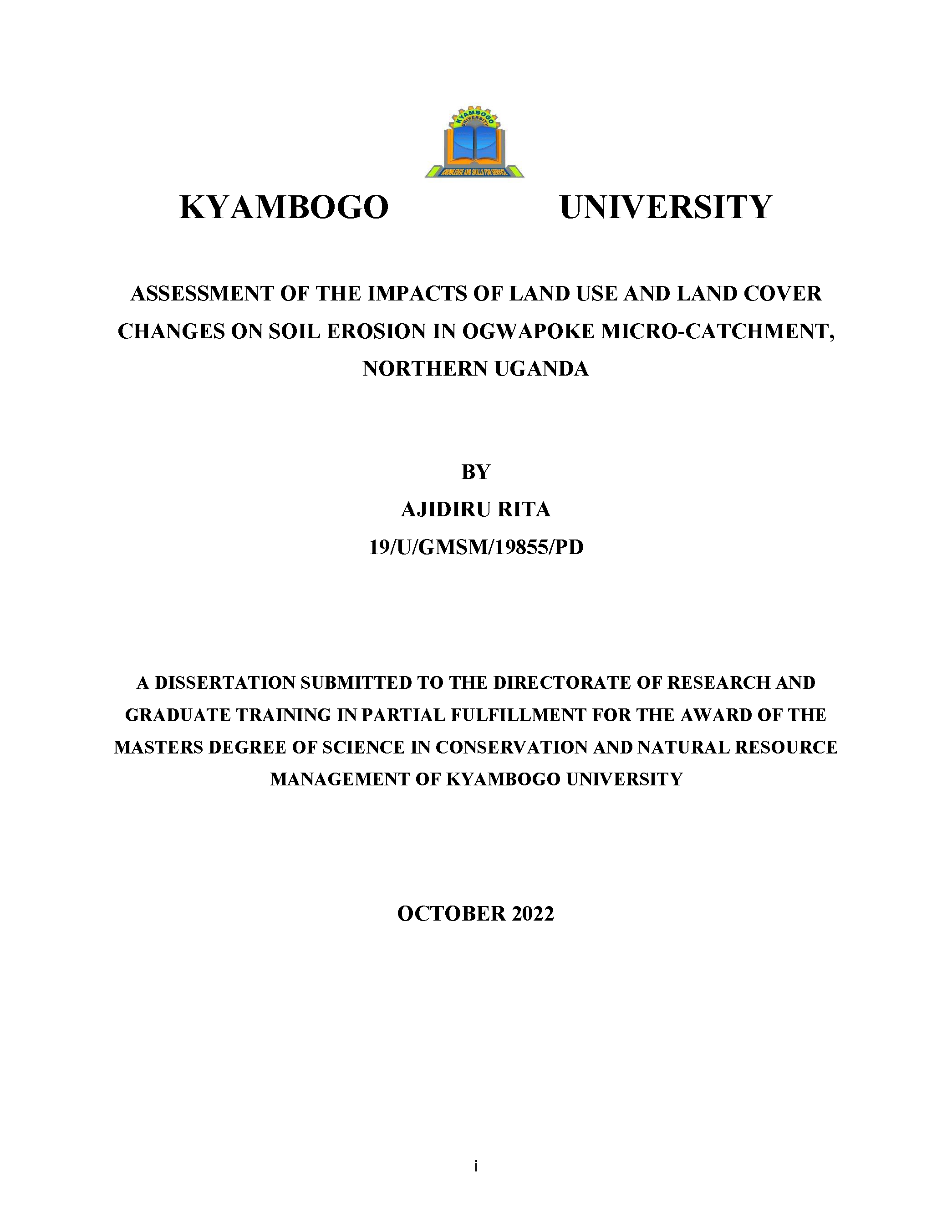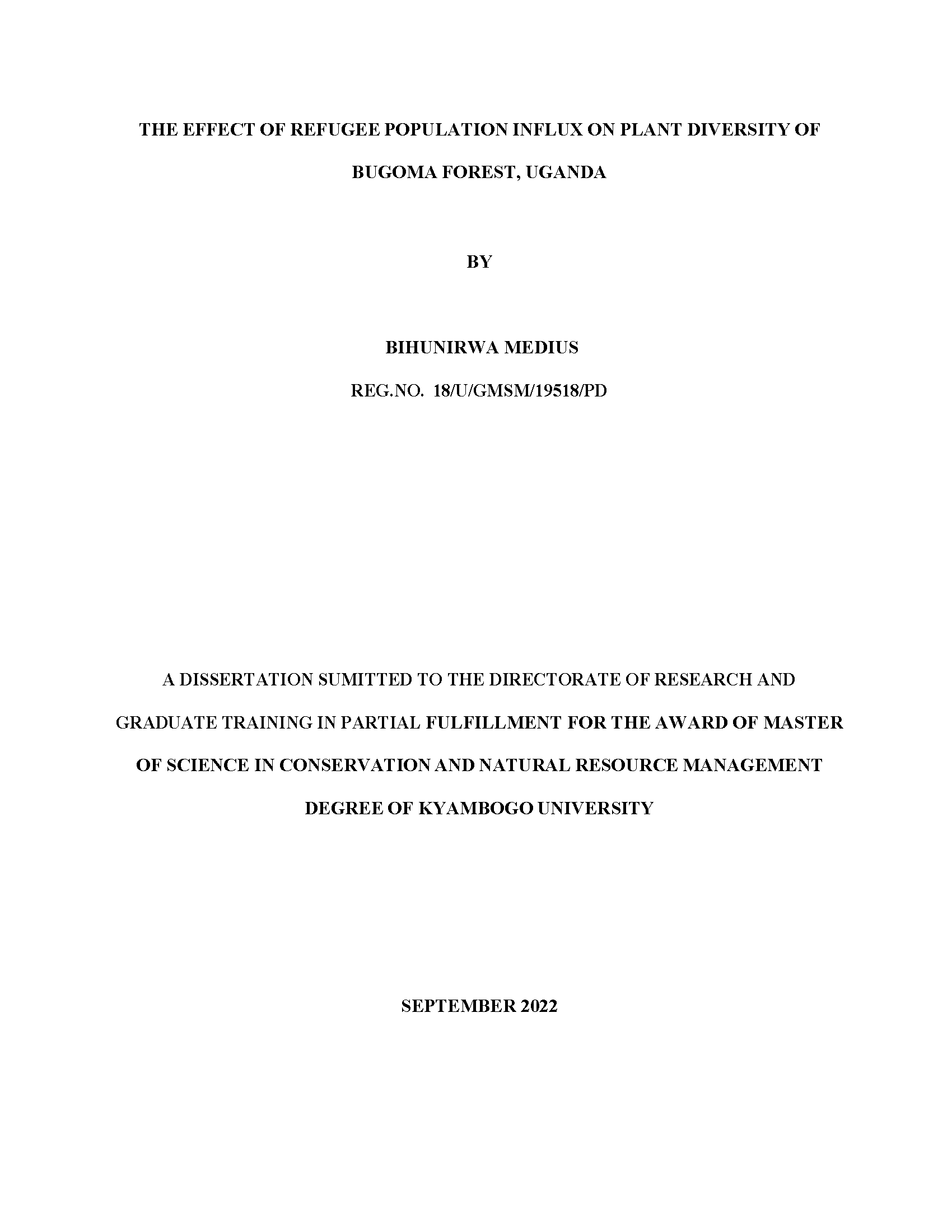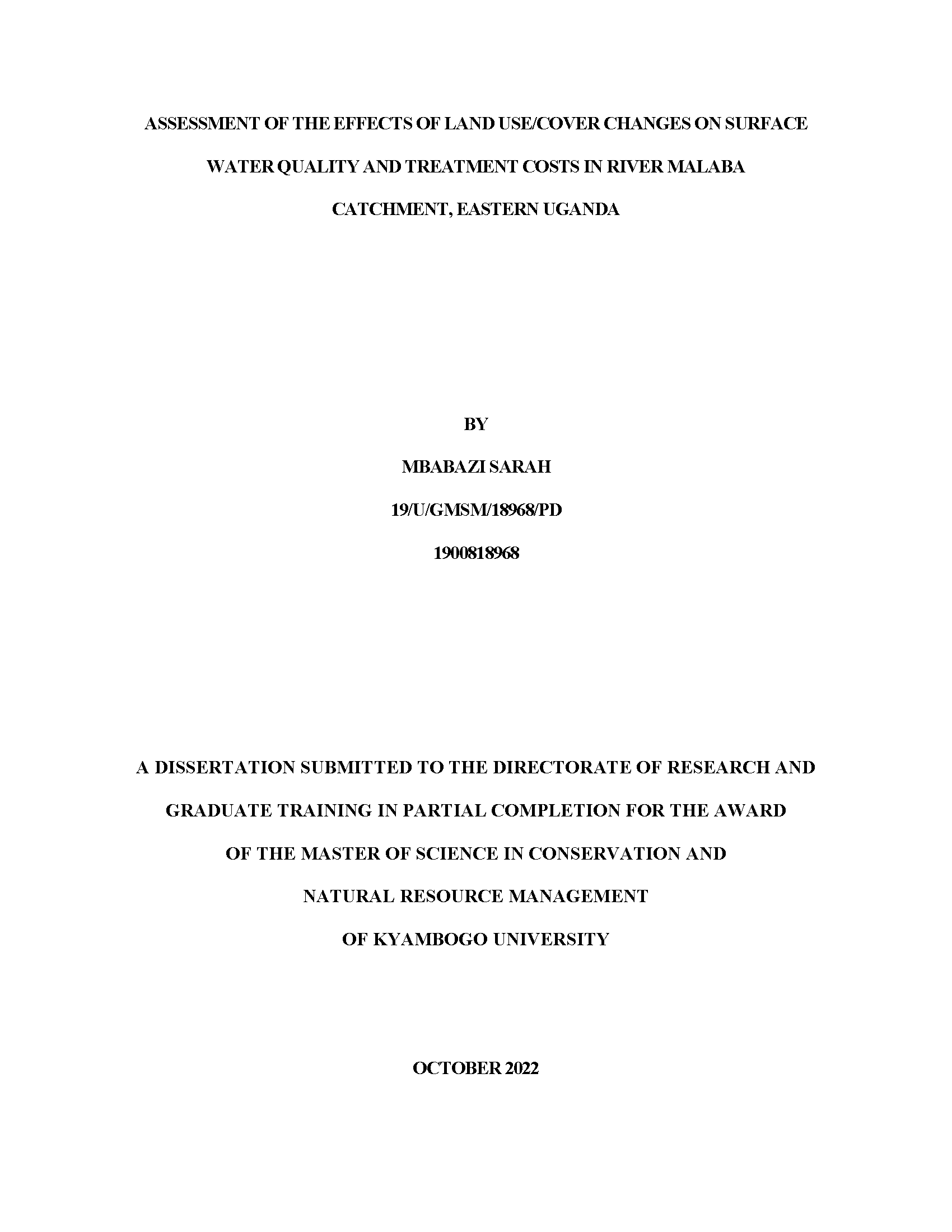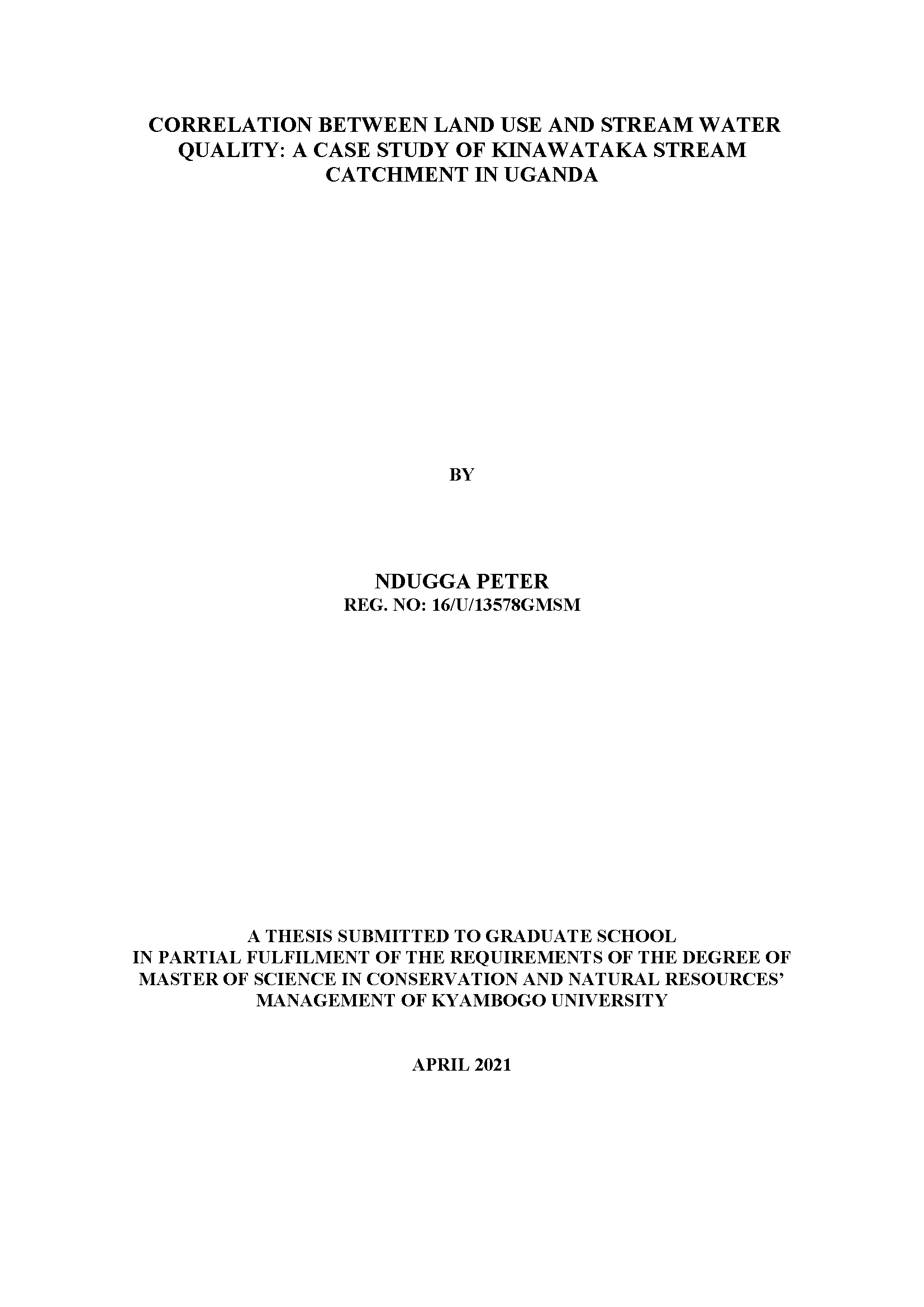Department of Environmental Science
Browse by
Collections in this community
Recent Submissions
-
Solid Waste Management Practices in Nakasongola Town Council, Uganda
(Journal of Global Ecology and Environment, 2024-11-06)Solid waste generation rates are rising and the world's cities are believed to be generating about 2.01 billion tons of solid waste, amounting to a footprint of 0.74 kilograms per person per day. The rapid population growth ... -
Uncovering the Anthropogenic Influences on Water Quality: A Case of Lake Victoria Shores, Entebbe, Uganda
(Asian Journal of Environment & Ecology, 2024-11-05)Lakes serve as vital ecosystems, providing freshwater resources and habitats for diverse species. However, human activities, particularly around lakeshores, have led to significant environmental degradation, including heavy ... -
Effects of Tin Mining on Water Sources in Mwerasandu Tin Mine, Ntungamo District, Uganda
(Journal of Agriculture and Ecology Research International, 2024-10-29)Tin mining is a widespread economic activity across various regions worldwide. Understanding the consequences of such operations is crucial for sustainable water management and environmental conservation. The current study ... -
Effect of Effluents Produced from Palm oil Processing Industries on Fish Production around Bugala Island, Kalangala District, Uganda
(Asian Journal of Environment & Ecology, 2024-10-17)Oil palm (Elaeis guineensis), a tree crop that originated from Central and West Africa is primarily planted in tropical regions, mainly in deep soils and humid climatic areas around lakes and wetlands. This has encouraged ... -
Viability and Profitability of Cage Fish Farming on Lake Victoria: A Case of Bugiri-Kiwuulwe Cage Fish Farms in Wakiso District, Uganda
(Journal of Basic and Applied Research International, 2024-10-15)Fisheries and aquaculture have crucial contributions to world’s wellbeing and prosperity. Among aquaculture practices, cage fish farming ranks highest in fish production. This study was set out to assess viability and ... -
The use of geographical information system (GIS) and remote sensing (RS) technologies in generation of information used to mitigate risks from landslide disasters: an application review
(Archives of Current Research International, 2023-08-03)Landslides, whether induced by nature, or human activities, are one of the most prominent disasters which are of great concern in the world. They cause a lot of havoc to the environment hence a necessity to avoid them ... -
Implementing Payments for Ecosystem Services and its Impact on Community Livelihoods: A Case of Nyamwamba Sub-Catchment, Kasese District, Uganda
(Journal of Agriculture and Ecology Research International, 2024-09-04)Payments for Ecosystem Services (PES) is an innovative, incentive-based approach to natural resource management, where users of ecosystem services compensate landowners who protect, enhance, or restore these services through ... -
Evaluation of the effect of wetland conversion on quantitative soil properties and water quality in namutumba district, Uganda
(Kyambogo University [unpublished work], 2023-07)There are many land use changes happening in Uganda whose impacts have not yet been well studied. This study determined the land use changes that occurred in Namutumba districts between 1988 and 2018 and determined the ... -
A Critical Review of Biomonitoring in East African Rivers: Fostering Community-based Collaboration for Environmental Change Observation
(2024-05)The contribution of citizen scientists in environmental monitoring is notably increasing significantly. Governments worldwide establish Water Users Associations (WUAs) as a good practice model, to implement Integrated Water ... -
Genetic dynamics of fusarium xylarioides: key to the management of coffee wilt disease in Uganda
(Kyambogo University [unpublished work], 2023-07)Fusarium xylarioides (F. xylarioides) is a vascular fungal pathogen that causes Coffee Wilt Disease (tracheomycosis). The pathogen is only endemic to Robusta coffee in Uganda while Arabica coffee is immune to it, yet Robusta ... -
The impact of floricultural activities on vegetation cover and water quality in Lutembe Bay Wetland, namulanda, Uganda
(Kyambogo University [unpublished work], 2023-08)Floriculture is becoming a key activity around most of the wetlands in Uganda since they provide quick avenues for disposal of effluents. In a bid to understudy the impacts of such floricultural activities on water quality ... -
Competitive and noncompetitive batch sorption studies of aqueous cd(ii) and pb (ii) uptake onto coffea canephora husks, cyperus papyrus stems, and musa spp. peels
(Journal of Chemistry, 2015-09)Coffea canephora, Cyperus papyrus, and Musa spp. were studied for competitive and noncompetitive removal of aqueous Cd2+ and Pb2+. The optimal conditions were pH 4.5 and agitation time 3.0 hours. Biomass constituent ions ... -
Assessment of levels, speciation, and toxicity of trace metal contaminants in selected shallow groundwater sources, surface runoff, wastewater, and surface water from designated streams in lake Victoria Basin, Uganda
(Journal of Environmental and Public Health, 2019-05)The levels, speciation of elements, and toxicity of selected trace metals as well as other parameters in selected surface water, shallow groundwater sources, landfill leachate, and associated surface runoff in the Lake ... -
Investigating changes in climatic dry conditions across the water management zones in Uganda
(Kyambogo University[unpublished work], 2022-09)Prolonged insufficient precipitation associated with evapotranspiration affects society in various ways such as wilting of crops. Studies with comprehensive analyses of climatic droughts while considering hydro-climatic ... -
Impact of implementation of community-based wetland management plan on the conservation of lake Mulehe wetland in Kisoro, Uganda
(Kyambogo University[unpublished work], 2022-09)Increased encroachment, mismanagement and degradation of wetland resources such as Lake Mulele in Uganda has called for continuous involvement of surrounding people into their management. The Ugandan government and other ... -
Potential of push-pull technology options for managing fall armyworm (Spodoptera Frugiperda) in Maize
(Kyambogo University[unpublished work], 2022-10)Fall armyworm is a key insect pest of maize. Without proper management, the pest can cause maize yield losses in the range of 8-21 million tones. It has been through application of synthetic pesticides, use of natural ... -
Assessment of the impacts of land use and land cover changes on soil erosion in Ogwapoke micro-catchment, Northern Uganda
(Kyambogo University[unpublished work], 2022-10)Several land use/cover changes have been observed in Ogwapoke micro catchment. Population increase, poverty, intensified and unsustainable farming practices and deforestation have been cited as the major drivers of land ... -
The effect of refugee population influx on plant diversity of Bugoma forest, Uganda
(Kyambogo University[unpublished work], 2022-09)Refugee population is one of the causes of land and environmental degradation in refugee hosting countries. However, the relationship between forest plant diversity and refugee population influx is not well documented. ... -
Assessment of the effects of land use/cover changes on surface water quality and treatment costs in river Malaba Catchment, eastern Uganda
(Kyambogo University[unpublished work], 2022-10)Changing land use and cover (LULC) is a major contributor to water quality degradation in various regions of the world. Unfortunately, there are not enough data on how LULC change affects water quality and prices in ... -
Correlation between land use and stream water quality: a case study of Kinawataka stream catchment in Uganda
(Kyambogo University(Unpublished work), 2021-04)Kinawataka wetland is an important ecosystem that plays a vital role in pollution and flood control as well as maintaining ground water supplies and quality in the Lake Victoria Basin. However, this wetland has undergone ...












